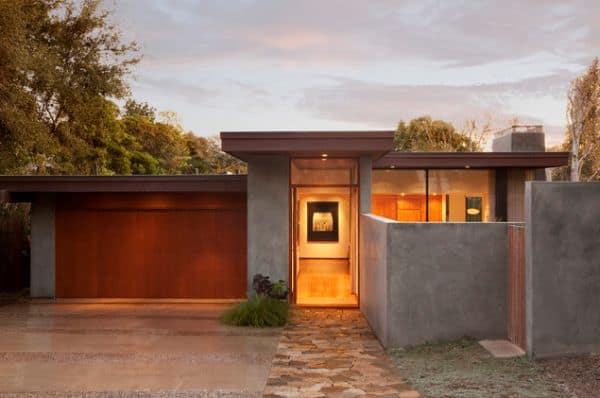
Flat roofs are usually found on commercial buildings rather than residential buildings, but this does not mean you cannot have a flat roof constructed on your home. There are several things to consider when choosing a flat roof, such as the materials, weather, and maintenance. Here are the advantages and disadvantages of constructing a flat roof on your home.
The Advantages of Flat Roofing
There are many people who prefer a flat roofing system over shingles or a tile roofing system. Here are several benefits of choosing a flat roof for your home.
- Easy Construction: It is easy to construct a flat roof, so you do not have to worry about your contractors running into an issue with the project.
- Flat Roofs Are Durable: If durability is important to you, then a flat roof is just the system for you. A flat roof is water resistant, so you do not have to worry about water damage. If you are using a flat concrete roof, then you are using a roofing system that holds up against heavy winds. The risk of a fallout decreases when you opt for a flat roof on your home.
- Repairs Are Possible: If there is a problem, it is just as easy to repair the flat roof as it is to construct it. The cost to repair or re-coat a flat roof is affordable compared to other roofing systems. You can have your flat roof fixed without breaking the bank or putting a lot of stress on yourself.
- Easy To Clean: A flat roof is easier to reach than most systems, which makes the maintenance easy. You want to remove algae, mold, and stains from your roof regularly to prevent debris from building up. Pressure washing is the best way to clean your flat roof without damaging it, especially if you have a flat concrete roof.
The Disadvantages of Flat Roofing
With the good comes the bad, and it is important to learn the cons of a roofing system so you can figure out if it is right for your home. Here are the disadvantages of choosing a flat roof for your home.
- Lack of Drainage: The biggest disadvantage of a flat roof is the lack of drainage, and this is why it is important to check your roof regularly. If you do not inspect it regularly, your drains may become clogged with snow and water. You want to clean out the drains as needed and be sure to use a waterproof seal regularly to prevent leaks. Remember, there are no slopes for the water or snow to slide down.
- Debris and Dirt Can Build Up: Snow and water are not the only things that can cause problems on a flat roof. Leaves, twigs, dirt and other debris can also clog up the drain, and this leads to snow and water not draining properly. You can avoid a clogged drain by regularly inspecting and cleaning the dirt and debris off your roof.
- Limited Roofing Materials: The majority of flat roofs use rolled roofing materials, which include TPO, EPDM, rubber, and bitumen. The materials are inexpensive but only last from ten to 15 years. There are alternatives, such as using rubber shingles with rolled rubber roofing, but they are more expensive and it is unknown how long the materials will last.
There are some homeowners who use flat roofing for years, and there are some homeowners who realize it is not right for them. It is best to go over the advantages and disadvantages of flat roofing and decide if it is right for your home.
Flat Roofs: The Good and The Bad
Call Us On (510) 521-7334
Your Local Roofers Since 1978
We invite you to contact us today for an estimate on your roofing project.
1814 Clement Avenue Alameda, CA 94501
(510) 521-7334
info@centralbayroofing.comLicense: 435272 Class B, C-39
Site powered by RooferBoost
Copyright 2017 Central Bay Roofing and Restoration | Login
